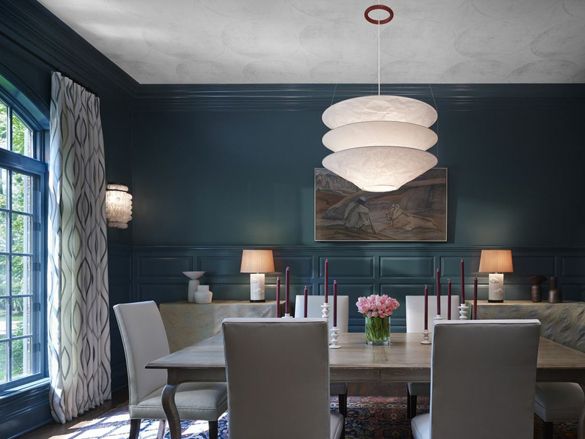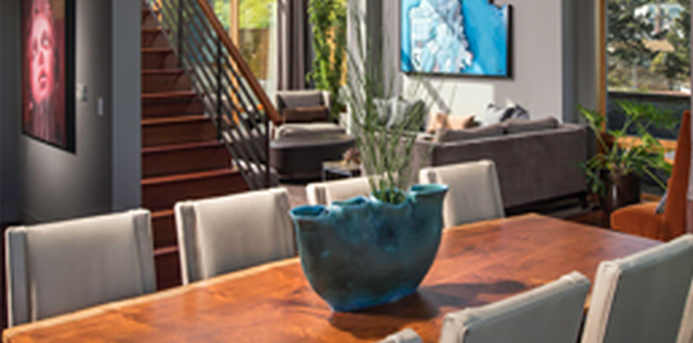Good design starts with the fundamentals of proportion and balance. Without these, even the most expensive furnishings will fall flat.
We asked interior designer and ASID Illinois board member Jase Frederick for her advice on how to achieve good balance in design. As she explains, any good designer worth his or her weight has a solid grasp of these fundamentals and other art principals, including perspective, form, rhythm and color. And while there are sage guidelines to consider for every space, she adds there is always room for creative interpretation.
Furniture Size and Layout
Goldilocks got it right after a few tries; you don’t have that luxury. Frederick warns against going too small with your furniture. Without the right visual mass, your furniture can look like it belongs in a dollhouse. Bigger can be better, as long as you preserve a sense of space and airiness.
- Avoid lining the walls with furniture and filling every open space and wall. Furniture layout should allow for about 18-24 inches between pieces.
- Don’t pair a large sofa with a delicate, coffee table or diminutive chairs. She recommends pairing different finishes and styles (for example, a skirted sofa with a wooden chair), but stresses that they should be of like proportion.
- The bed is typically the focal point and largest piece in your bedroom, so Frederick recommends starting there. If you’ve got a substantial headboard or frame, make sure to choose nightstands that are of similar size and heft.

- When it comes to the dining room, function is critical. At the very least, you need 36 inches clearance between the table and wall to get your chairs in and out and to allow for traffic flow.
Light it Right
- Always consider the dimensions of your space first, including the ceiling height. To determine the right size for a focal-point light fixture, Lightology recommends adding the length and width in feet of your room together and using the sum as the approximate diameter in inches.
- Allow about 30-34 inches between the bottom of your light fixture and the height of your dining table, and make sure your fixture diameter doesn’t exceed half or two-thirds of your table width.
- A visually hefty fixture can be sized down a bit from the recommended size, while a more delicate fixture can be sized up.

Window Dressing
- Here function should be your first consideration. Do you need privacy, darkness for sleeping or is a translucent material enough to temper the sun? Choose a window treatment that best meets your needs.
- Frederick advises clients to choose the best treatment they can afford. With drapery, avoid off-the-rack if it’s going to look skimpy. If you intend to open and close your drapes, they should measure a minimum width and a half of your window width and at least as wide as your drapery hardware (you don’t want your drapery looking like a “stretched sheet”).
- Never let the hardware steal the show. Consider the proportion of your room and window and choose hardware in a material and width that doesn’t overwhelm the window.
Accessories 101
Frederick reminds clients that your eye should always find a place to rest in a room. That means not overdoing it with color (stick to one or two bright colors paired with a neutral) or texture, and paring back your stuff.

- Avoid the “yard sale” look. If you’re drowning in clutter, consider hiring a professional organizer first before bringing in a designer.
- You want your home to look like it’s lived in, with accessories that have relevance and personal meaning—but avoid the urge to “fill your room.”
- A single large accessory on a table can be more impactful and less distracting than a mass of disparate objects.
- Frederick has worked with clients to curate their accessories, even displaying and storing objects in an effort to “rotate collections.”
Get Help When You Need It
Sometimes you just need help. ASID Illinois offers a “Find a Designer” resource on their website to help you find a seasoned, professional designer to meet your needs. ASID IL designers are trained to understand the contextual relationships between various design and architectural elements of a room and are able to expertly put them together to create a space that’s exactly what you had in mind.
Photo credit: ASID Illinois – 2013 Celebration of Design Award Winners

